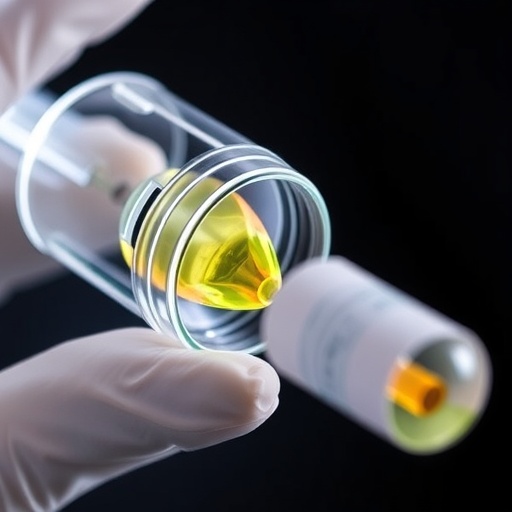
Credit: Credit: NASA/JAXA/NRL
NASA has the unique capability of peering under the clouds in storms and measuring the rate in which rain is falling. Global Precipitation Measurement mission or GPM core satellite passed over Tropical Storm Jerry from its orbit in space and measured rainfall rates throughout the storm.
The GPM’s core satellite passed over Tropical Storm Jerry in the Atlantic Ocean on Sept. 18 at 11:51 p.m. EDT (Sept. 19 at 0351 UTC). GPM found the heaviest rainfall stretching from the eastern to southern side of the storm where it was falling at a rate of over 25 mm (about 1 inch) per hour there and in a fragmented band of thunderstorms west of center. Forecasters at NOAA’s National Hurricane Center or NHC incorporate the rainfall data into their forecasts.
Hurricanes are the most powerful weather event on Earth. NASA’s expertise in space and scientific exploration contributes to essential services provided to the American people by other federal agencies, such as hurricane weather forecasting.
NHC issued a Tropical Storm Watch for Barbuda, Anguilla, St. Maarten, St. Martin, St. Barthelemy, Saba and St. Eustatius.
At 8 a.m. EDT (1200 UTC), the center of Tropical Storm Jerry was located near latitude 16.4 degrees north and longitude 53.9 degrees west. That puts Jerry’s center about 525 miles (845 km) east of the Leeward Islands. Jerry is moving toward the west-northwest near 16 mph (26 kph). A west-northwest motion at a slightly faster forward speed is expected over the next few days.
Maximum sustained winds remain near 70 mph (110 kph) with higher gusts. Jerry is forecast to become a hurricane later today, with little change in strength anticipated on Friday or Saturday. The estimated minimum central pressure is 995 millibars.
NHC noted in its key messages that “Jerry is expected to become a hurricane before it moves close to the northern Leeward Islands Friday. Although the core of Jerry is currently expected to pass north of the islands, tropical-storm-force winds and locally heavy rainfall are possible, and tropical storm watches have been issued for a portion of this area.” Additional key messages for Jerry can be found on the web at: http://www.
###
Both the Japan Aerospace Exploration Agency, JAXA and NASA manage GPM.
For updated forecasts, visit: http://www.
Rob Gutro
NASA’s Goddard Space Flight Center, Greenbelt, Md.
Media Contact
Rob Gutro
[email protected]
Original Source
https:/




